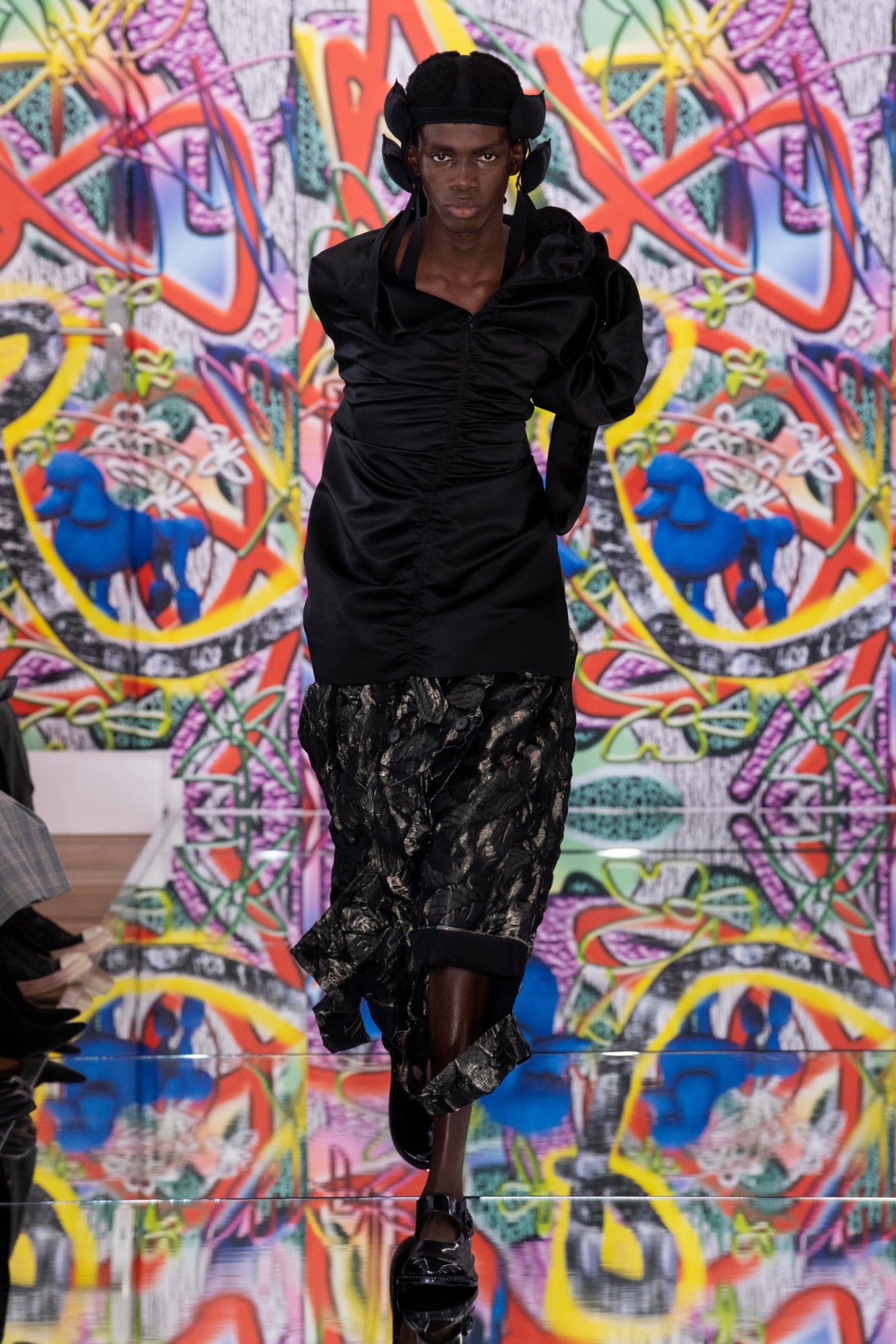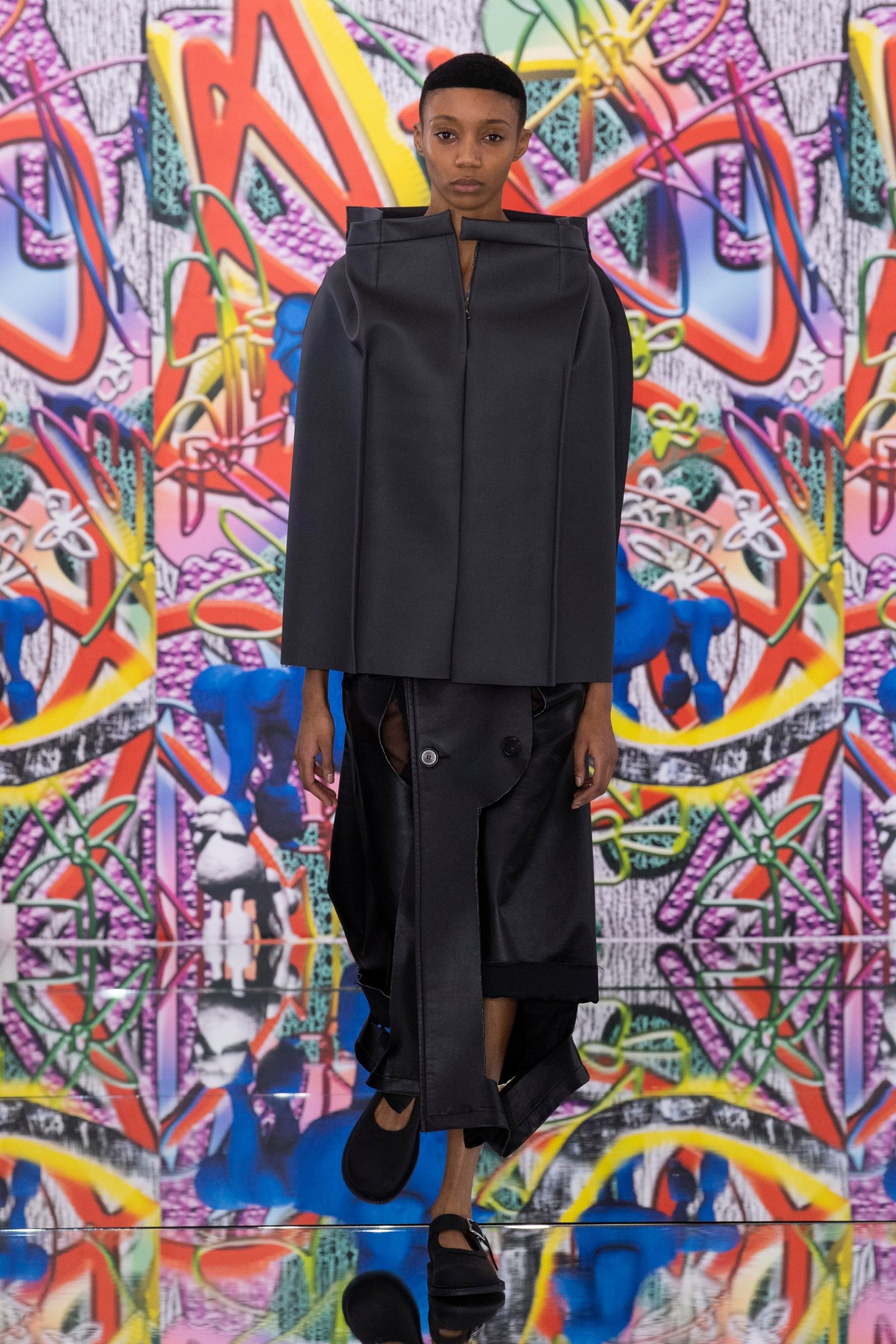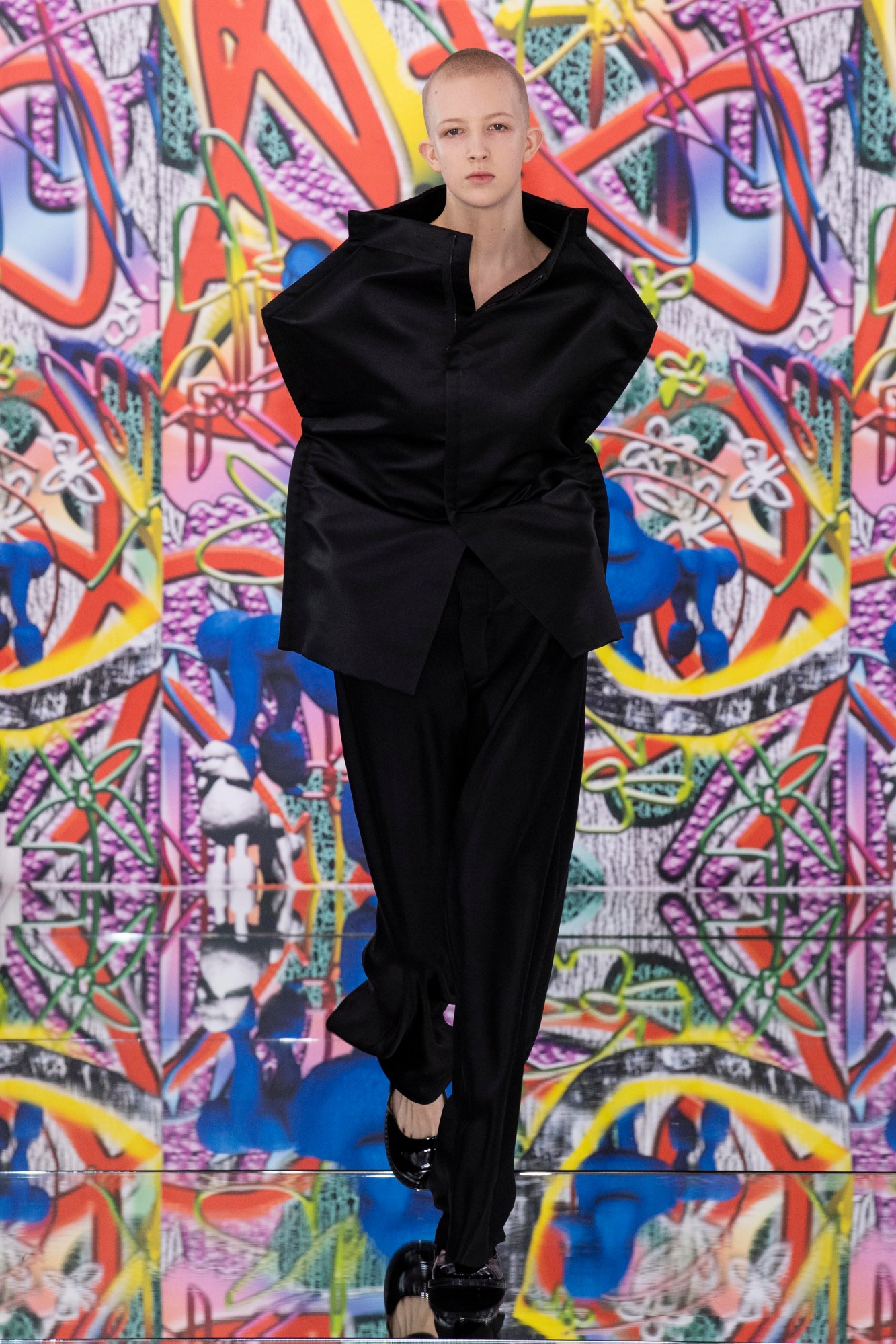Decadence. Where did it go? Once upon a time, fashion — and especially haute couture — was all about decadence. And there isn’t a designer alive who could be described as more decadent than John Galliano, who has staged some of the most opulent coups des théâtre that fashion has ever seen. The word was on his mind this season as he considered the post-truth URL-not-IRL Age of Information we’re living in. So many images, so much consumption, so much saturation. In Galliano’s hands, it became about chaos and control in a collection that veered from maximalist frenzy to decadent minimalism.
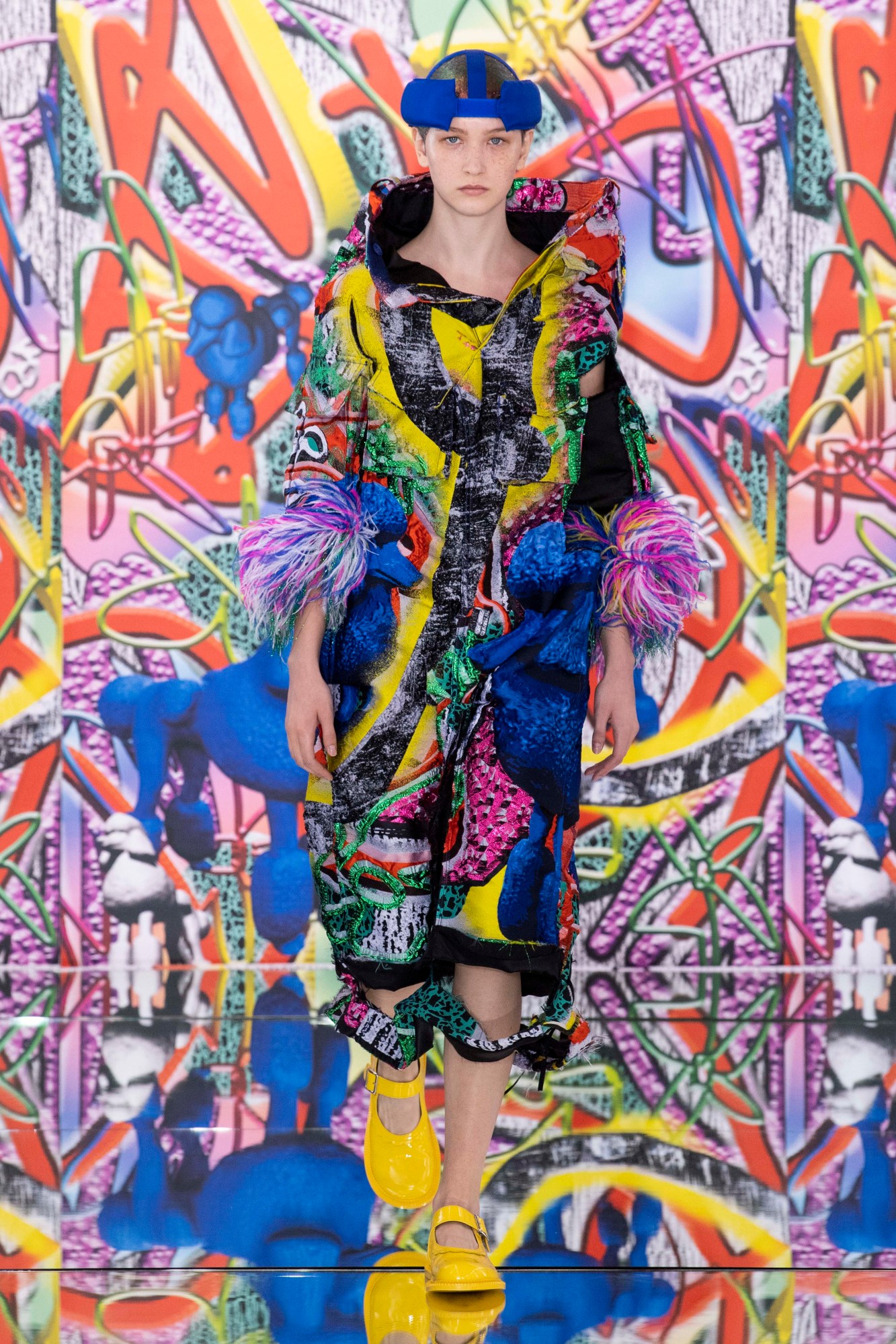
It all began with A Rebours, Joris-Karl Huysmans’ 19th Century novel about Jean des Esseintes, an eccentric recluse who creates a world around him filled with poetry, perfume, beautiful-but-poisonous flowers and even a bejewelled pet tortoise. Galliano skipped straight to the tenth chapter, an episode about the dizzying effect of olfactory experimentation. On Margiela’s seasonal podcast, the designer confessed he sprays the street outside his home before guests arrive.
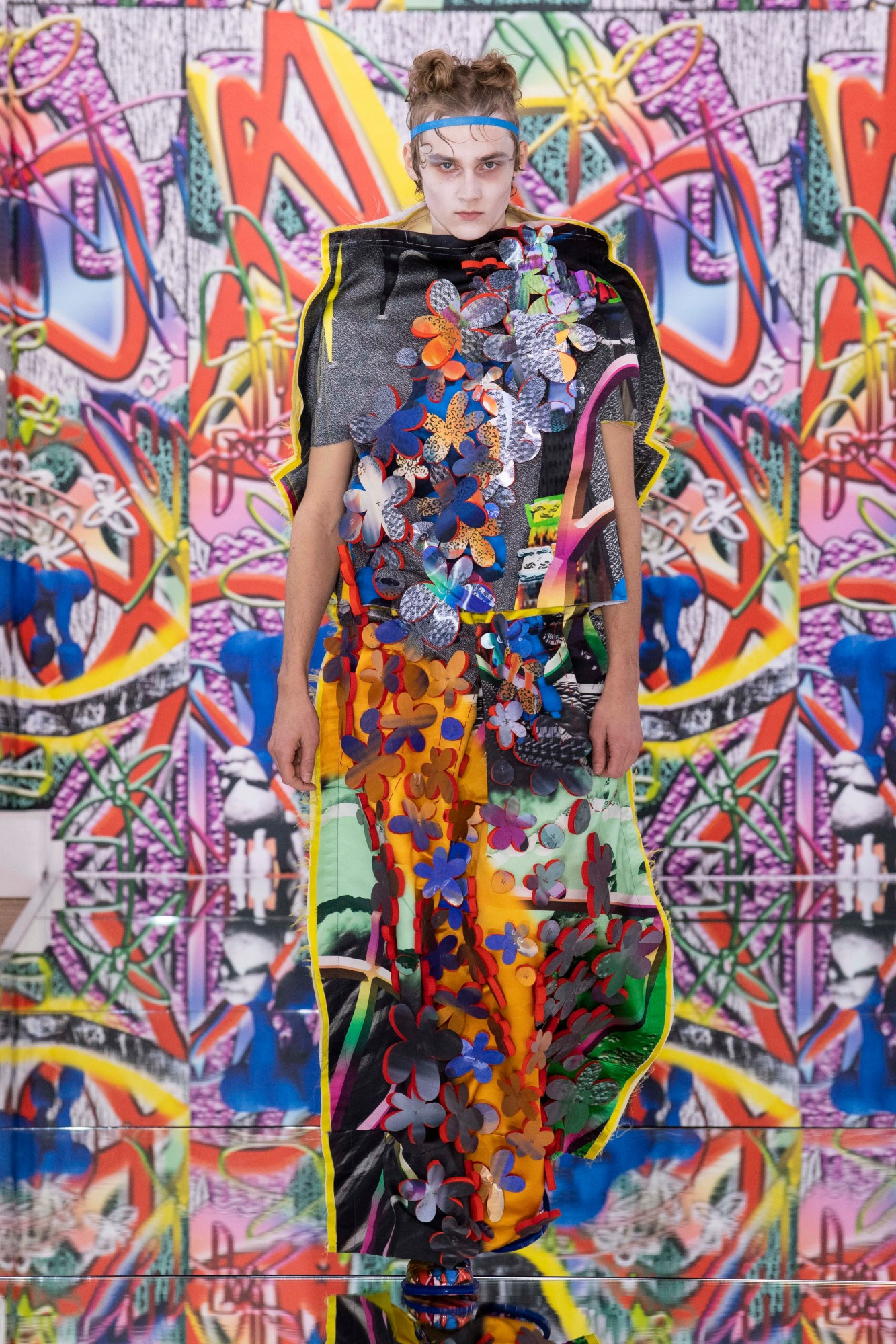
“We decided decadence is cyclical,” Galliano cooed. “We then decided what is happening is a reflection of the excess, the artifice and the decay, where we’re so overwhelmed with so much imagery that you almost want to regurgitate.”
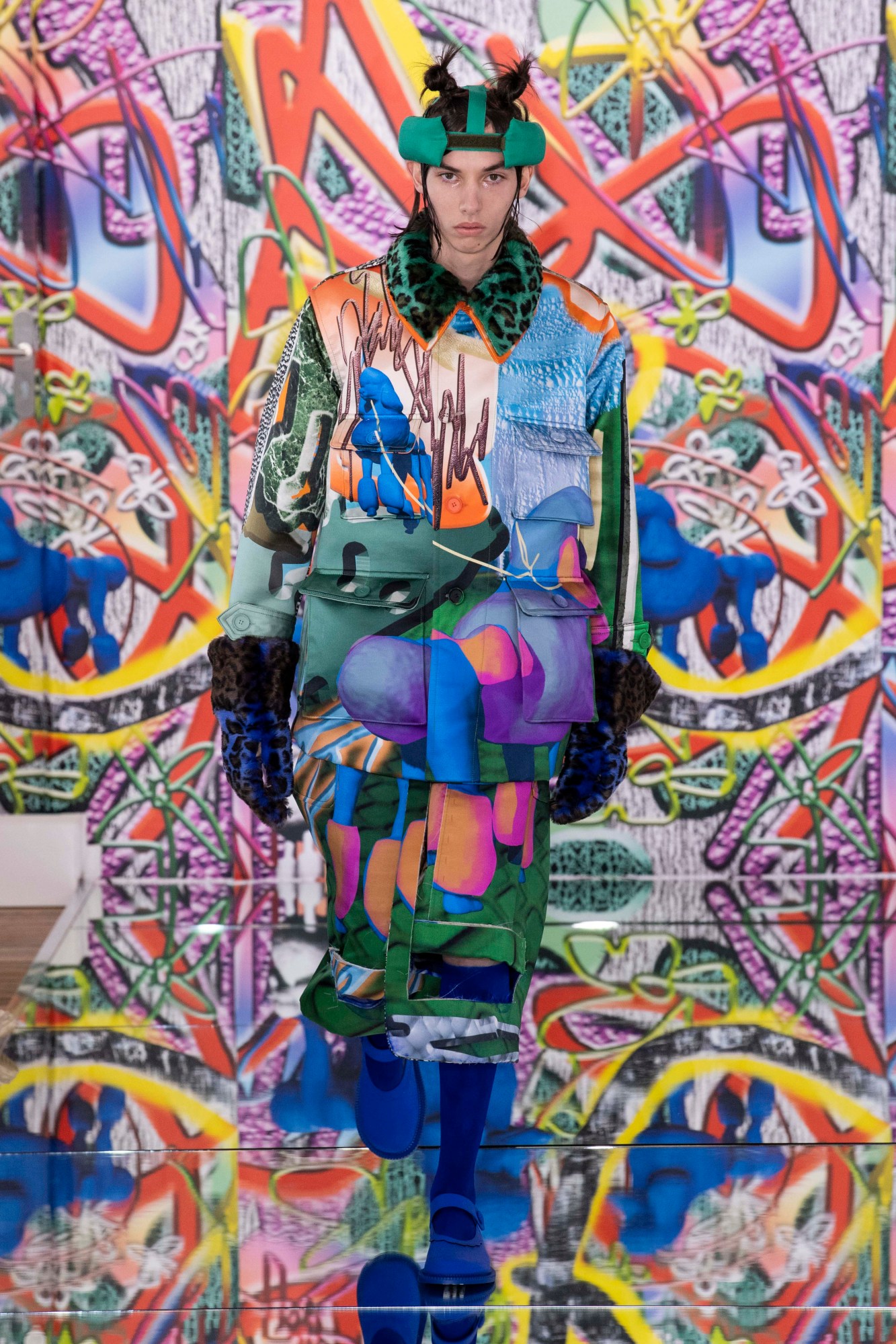
It’s no secret that Galliano populates his Margiela atelier with students on work experience placements: a colourful cohort who give him an insight into youth culture. Many of them were born around the turn of the millenium, and Galliano describes their feeling as “le malaise de la fin du siècle”. How do they respond to the maddening world around them? A decadent alternative reality, of course. “When a fabricated piece of information becomes interchangeable with real life, in theory it becomes a new reality,” he explained. “For young kids, it’s irrelevant if it is or isn’t true. The authenticity origins are redundant. It’s the results that count.”
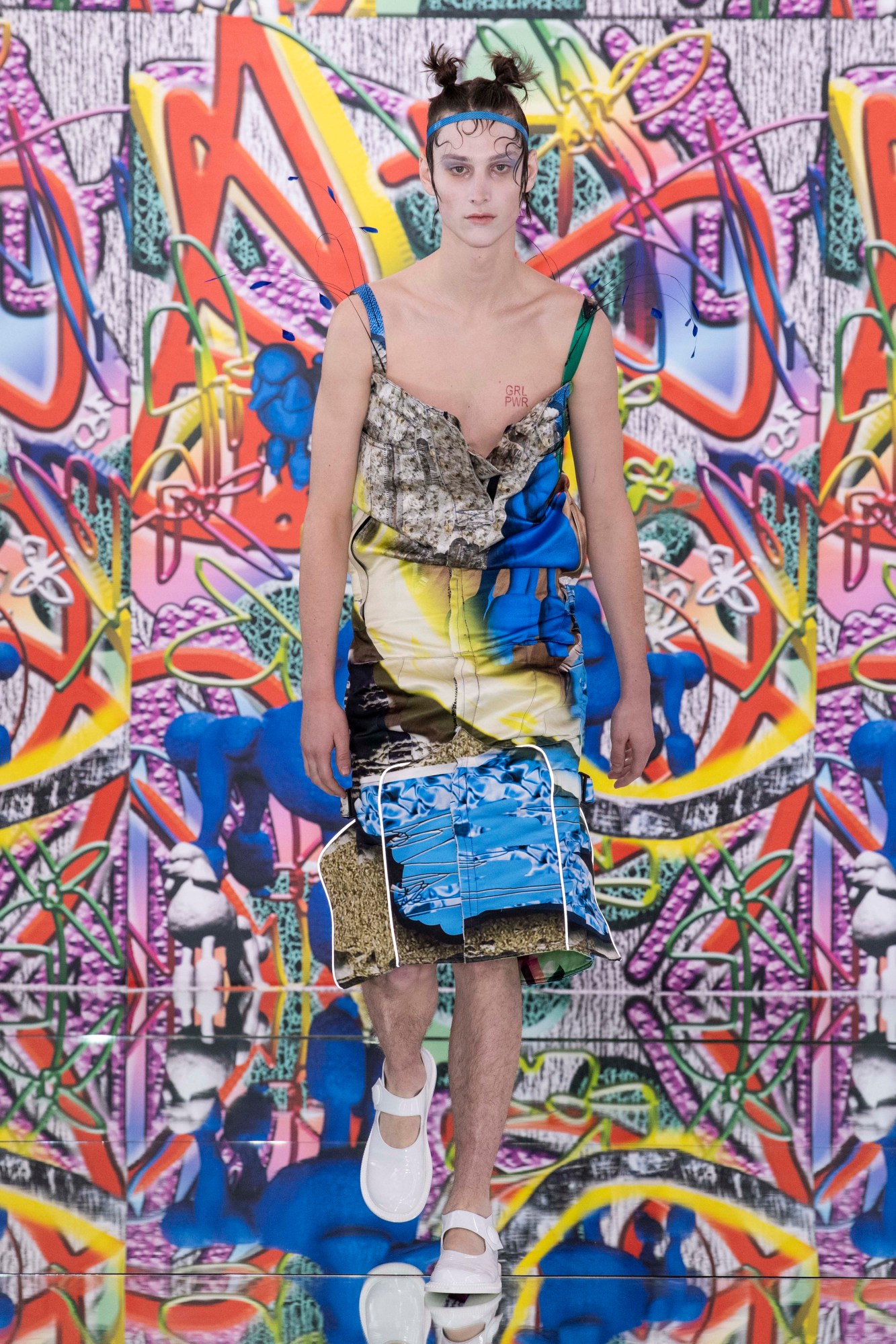
The show started with Galliano’s vision of cultural couture chaos. “It was the idea that inverted excess could lead to something a little more minimal,” he said. “To get to that I felt I had to emotionally create this chaos that we’re living in now.” Look closely and you’ll notice that so many of the looks centred on the combination of a trench coat and skate shorts, artfully hybridised as one with the lining of the latter opened up on the thigh so the seams of the inner leg become the silhouette. Many were given the house-classic décortiqué treatment, which Galliano uses to imbue the ‘memory’ of new garments upon familiar forms, toying with the original Margialisms of deconstruction and reconstruction.
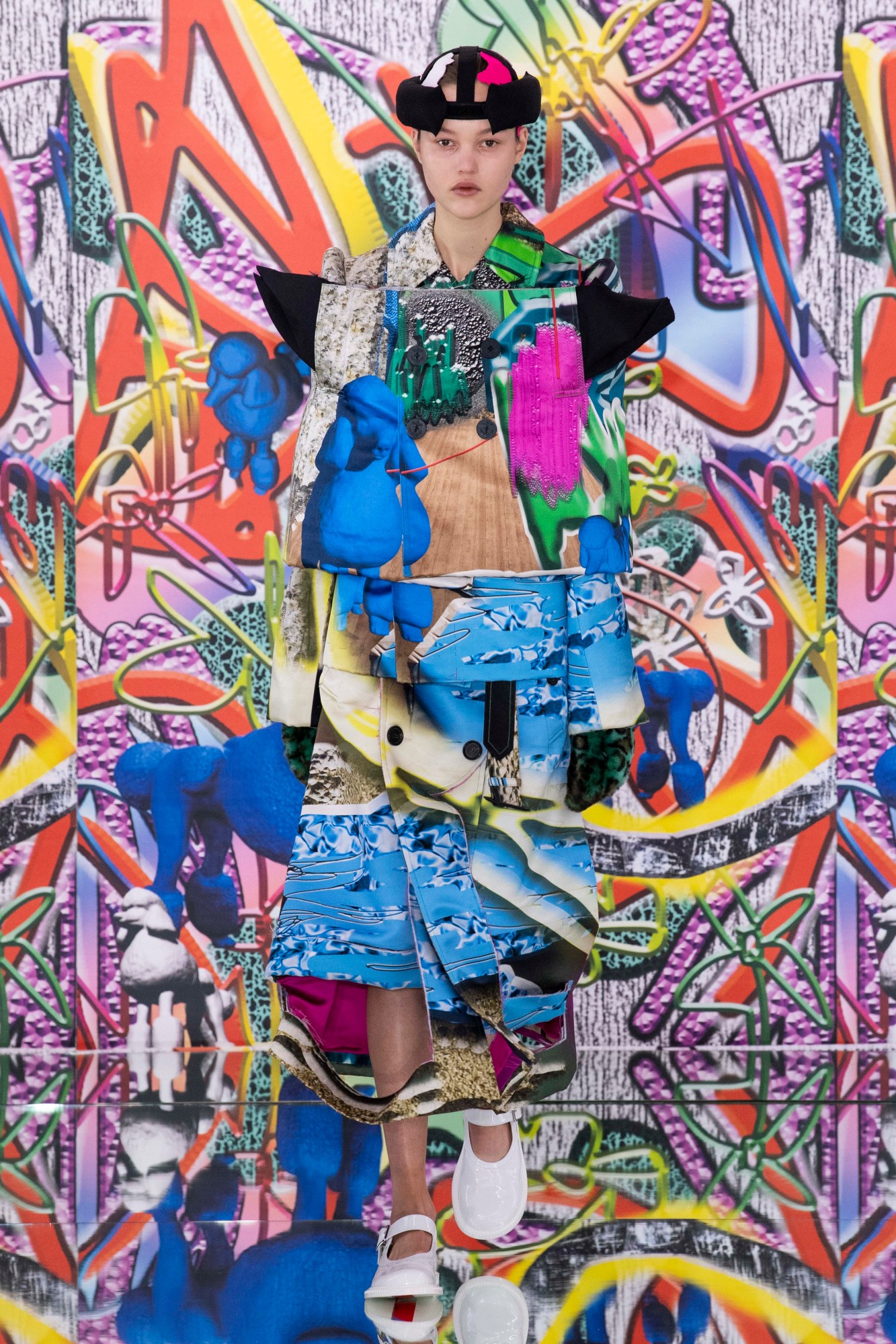
All this sumptuous fabrication was offset by chaotically printed duchesse satin — which Galliano referred to as the “sequence print” — all digitally-conceived freeze-frames, including a 3D rendered poodle. There were hints of the quintessentially decadent 18th Century, too: corstry ribbons; neon pink bag wigs; exaggerated cuffs. Why? Galliano said he couldn’t help himself. It proved that no one is better placed to make decadence so apt for today.
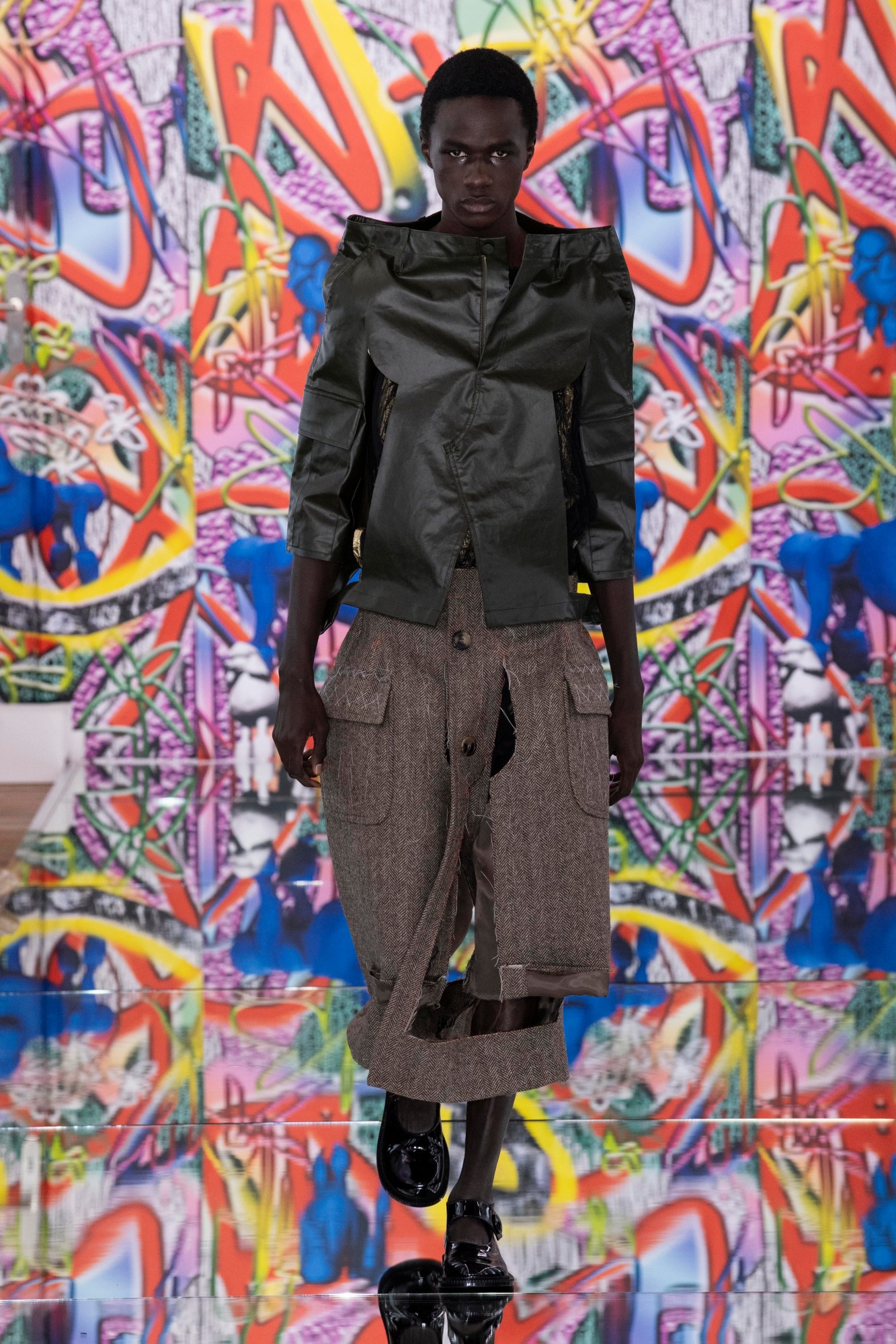
Why so many blue poodles? Galliano felt that a dyed poodle in all its topiaried glory is the epitome of decadence. It came in an intricate inside-out jacquard, its strands left long the way they came off the loom, then sculpturally trimmed — just like a real poodle. All that sumptuous fabrication was offset by chaotically digi-printed duchesse satin – what Galliano called the “sequence print”; all computer-generate freeze-frames. There were hints of the quintessentially decadent Eighteen Century, too: corsetry ribbons; neon pink bag wigs; exaggerated cuffs. Why? Galliano said he couldn’t help himself. It proved that no one is better placed to make decadence so apt for today.
